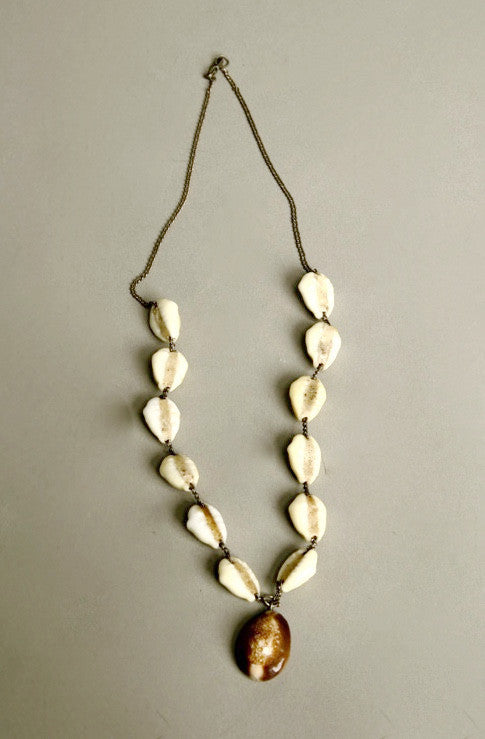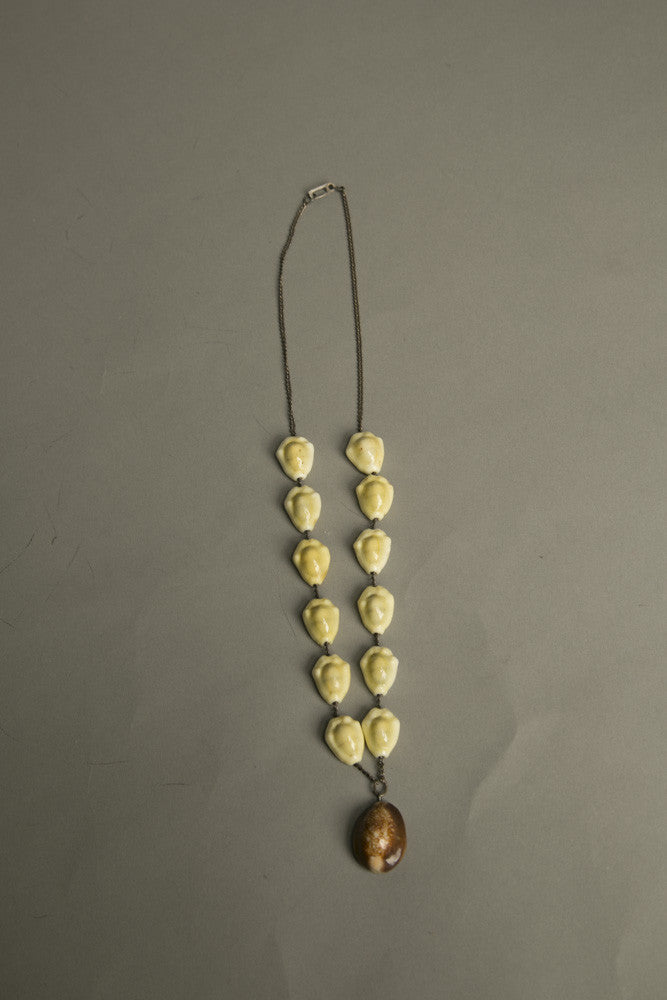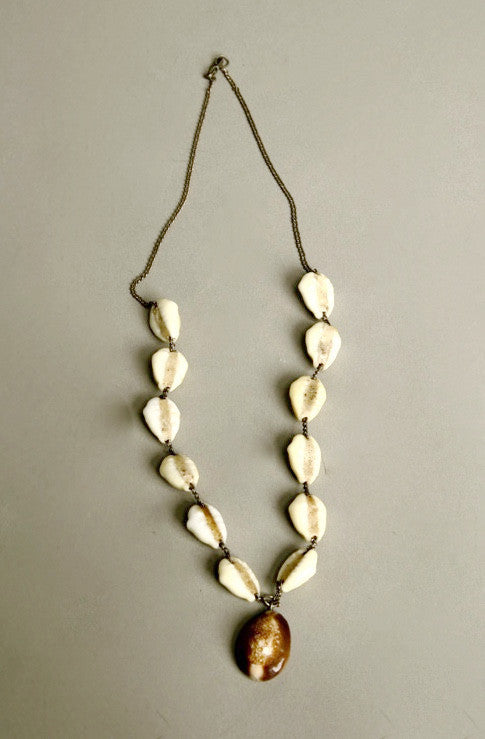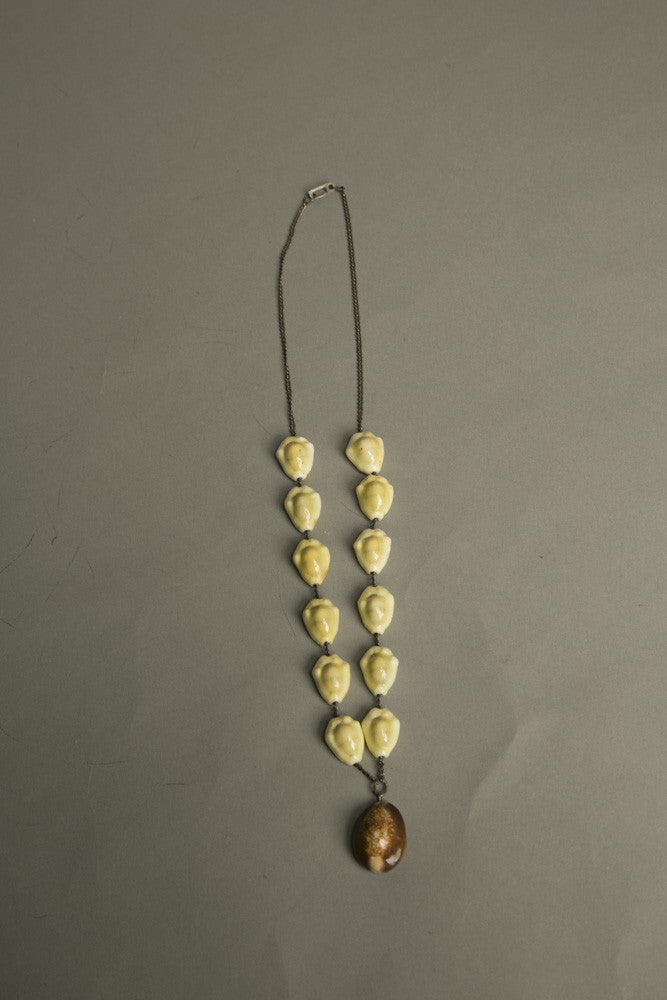Vintage Unsigned
Cowrie Shell Beaded Necklace Ethnic Handmade Vintage Jewelry
Cowrie Shell Beaded Necklace Ethnic Handmade Vintage Jewelry
Couldn't load pickup availability
Ethnic beading created with genuine cowrie shells each individually placed and linked to metal chain on this unique jewelry piece, unmarked treasure
This necklace has a couple of very uncommon features. The clasp closure that slides open on a v-shape and lock the ring back in (only time I ever saw this in 30+ years collecting jewelry) and the cowrie have a more flat one side which has been "closed" with "clay?" not sure as its sealed and I can't really feel that underline material
Approx. measurements: 25 inches around neck
True Vintage Jewelry, exact era unknown
Very good vintage condition, no damages, nothing missing, all authentic, genuine, functional and ready to wear
It will be carefully wrapped to ensure its safe travels. It would make a wonderful vintage gift to many jewelry collectors!
talkingfashion: Cowrie shell was also known as Shell money. It is a medium of exchange similar to money that was once commonly used in many parts of the world. The use of shells in trade began as direct commodity exchange, the shells having value as body ornamentation. The distinction between beads as commodities and beads as money has been the subject of debate among economic anthropologists.
Some form of shell money appears to have been found on almost every continent: America, Asia, Africa and Australia. The shell most widely used worldwide as currency was the shell of Cypraea moneta, the money cowry. This species is most abundant in the Indian Ocean, and was collected in the Maldive Islands, in Sri Lanka, along the Malabar coast, in Borneo and on other East Indian islands, and in various parts of the African coast from Ras Hafun to Mozambique. Cowry shell money was important at one time or another in the trade networks of Africa, South Asia, and East Asia.
Share




